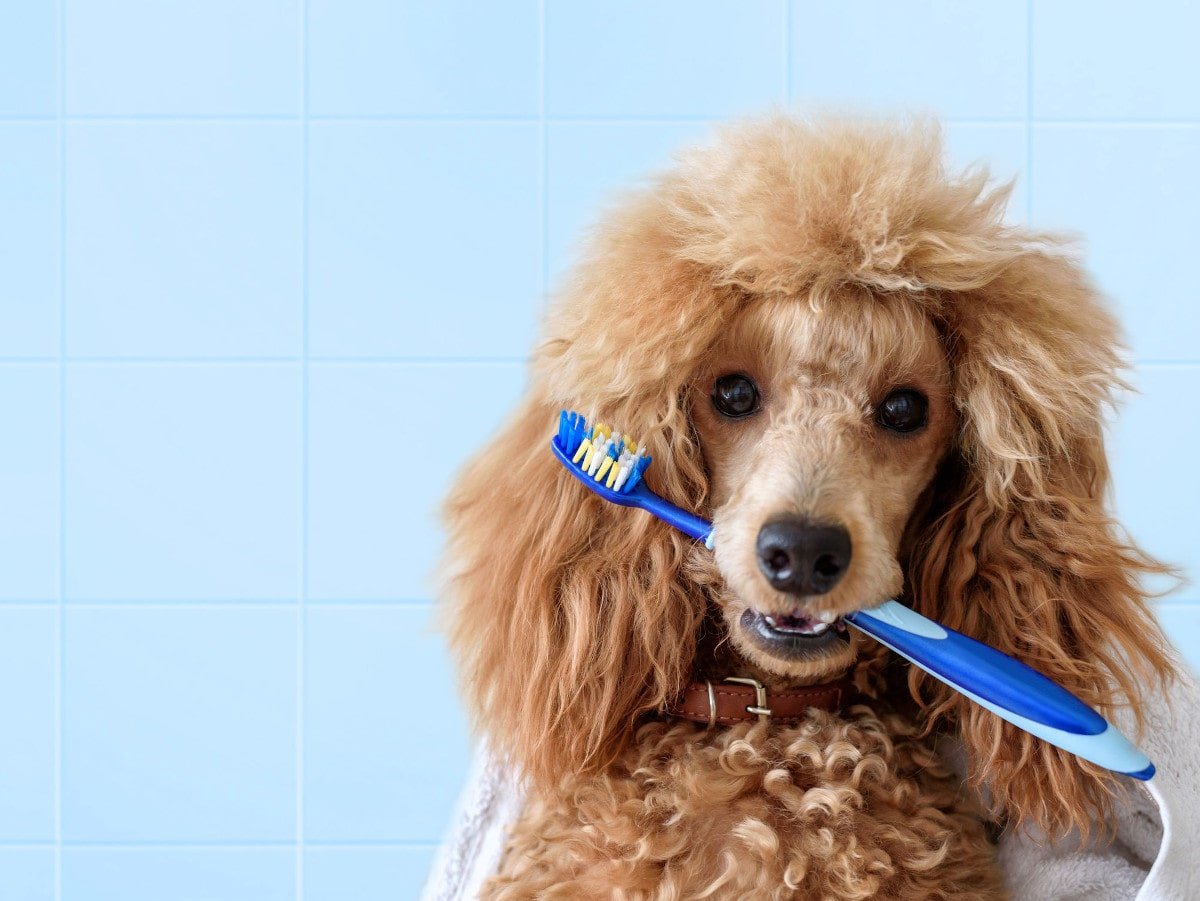That’s right. 80% percent of all adult dogs struggle with a serious problem. Gum disease.
Most pet parents consider their canines to be family. They love their pups and want what’s best for them. However, many dog parents don’t realize the rampant problems of gum disease in their pet. And it is a serious problem.
Effects Of Gum Disease (Periodontal Disease)
~ Tooth Loss. Tooth decay and eventual loss is a problem many dogs face as they age. Bacteria will work its way under the gums causing inflammation and eventual decay. When a tooth is lost the bacteria may also spread and cause bone damage to your pup’s jaws.
~ Heart Disease. According to a study released by Purdue University, dogs who suffer from Periodontal Disease have a higher risk of developing heart disease. The bacteria build up in the gums will enter the blood stream and harden around the arteries creating a severe health risk for your pup.
~ Pain & Less Energy. Dogs are masters at hiding discomfort. Usual signs of age include slowing down, but this could also be an indicator of oral problems. Lack of energy could equate pain.
~ Misery . For you and your dog. Gum disease can lead to extreme pain and discomfort and eventual loss of life. Health problems lead to medical bills which lead to unnecessary pain and suffering for you.
How do you know if your dog has gum disease? Well, if your pup is over 3 it’s likely that you’re dog already has it.
Symptoms of Gum Disease
A common indicator of Gum Disease and other underlying problems is Bad Breath (Halitosis). You may be surprised to know, that bad breath actually isn’t normal for your pooch. In fact, it can be a sign of several health issues including diabetes, kidney disease, or liver disease. That or your dog likes to dig into some unsavory snacks when you’re not watching. Whatever the case may be, bad breath is something that should be investigated for your pup’s health and safety.
If your dog struggles with eating, this could be another sign that there are oral problems happening. Bleeding on the gums, water bowl, or chew toys are also indicators. Another big sign involves a personality change. If your dog doesn’t want its head touched, chews on one side of the mouth, or grows more sensitive if you play with its mouth these are all signs of gum disease.
Periodontal disease isn’t noticeable at first. Dogs mask their pain well in order to not seem weak. It’s important to take the necessary steps to prevent gum disease early and treat your pup before things grow out of control.
How to Treat Your Dog’s Periodontal Disease
~ Brush Your Dog’s Teeth. Yes, it’s a hassle. Your dog will probably hate it at first. You’ve got a million other things to do, BUT brushing your dog’s teeth will go a long way in treating gum disease and preventing any future illness. If not once a day, then at least a couple times a week will make a huge difference.
~ Annual Cleanings. Make sure to take your dog to the vet annually to get their teeth cleaned. They’ll be able to x-ray and notice any plaque build up that a simple brushing can’t reach.
Important: annual cleanings with the vet are not enough. This must be in joint with brushing. If you’re concerned about the anesthesia, AAHA has a great explanation of the procedure and why it’s important for your dog.
~ Chew Toys. According to one study, when dogs used chew toys, the risk of periodontal disease decreased significantly. It’s important when choosing a chew toy that the toy itself isn’t too hard or you risk tooth fracture. Bones, antlers, ice cubes, horse hoofs, and even nylon chews can be too tough for your dog’s teeth.
~ Use Approved Products. Not every brand will work as advertised, so it’s important to research which products are the best for your dog. The Veterinary Oral Health Council (VOHC) has made a recommended list of products that are proven to aid your pup in its oral health.
In Conclusion
Taking care of your dog’s teeth will significantly improve your dog’s health and wellness. Frequent brushing, annual visits to the vet, and using VOHC approved products will help ensure your pup’s optimal oral health. Nobody likes a tooth ache and your dog will thank you for the extra care.
For More Resources
If you’d like to learn more about how to brush your dog’s teeth, you can check out these websites that give some helpful tips on the subject.
